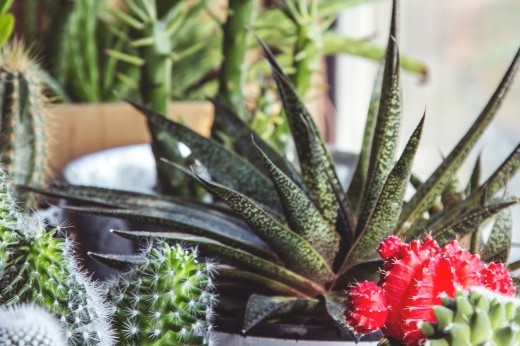Topics
Special Series
-
Bamboo: Graceful Grass or Jungle Giant
Imagine yourself enclosed deep within a bamboo grove, a "living room" of green, with walls enveloping but breathing, a cathedral of vertical stems stretching to the heavens above, the shadows delicate and swaying. You feel quiet, contemplative and calm, protected. Are you in Kyoto, Bangkok, or Bali? No, you are at home, surrounded by bamboos in containers. It is not difficult to create your own bamboo grove indoors—try it!
By Susanne Lucas -
Cacti and Other Succulents as Houseplants
Succulents evoke glorious warmth, and range widely in form and texture. They make wonderful houseplants, alone or in a group.
By Julia Solarz -
Gods and Monsters: The Genus Ficus
We encounter glorious specimens in ubiquitous bank and shopping mall plantings, we marvel at lush archetypes on tropical isles whilst on vacation, and we regard forlorn examples in the corners of our doctor's office. We adore them. We despise them—yet we attempt to maintain them time and time again. They are the gods and monsters of the indoor gardening world—they are the figs, the rubber trees, the genus Ficus.
By Scott D. Appell -
Palms in the Parlor
Of all the members of the plant kingdom suitable for use as houseplants, none evoke a feeling of the tropics like the palms. With their large, architectural leaves and strong outlines, palms can help create an indoor Garden of Eden wherever you live.
By Tom McClendon -
Nine Keys to Plant Disease Prevention
Prevention is the key to plant-disease control. This is true whether a disease is infectious (involving host-parasite relationships between plants and pathogens such as certain fungi, bacteria, or viruses) or non-infectious (involving disorders such as nutrient deficiencies or winter damage).
By Jim Chatfield -
Least-Toxic Controls of Plant Diseases
The best way to control plant diseases is to make sure they don't get a foothold in the garden in the first place. However, if they are already established, you may feel it's necessary to resort to one of the controls described below.
By William Quarles -
Flora for Fauna
Transforming a garden into a wildlife refuge doesn't require a big cash prize; you can do the work gradually. Start by expanding your existing borders with flowers that butterflies, hummingbirds, bees, and other pollinators love.
-
Zinnias—If You Plant Them, Butterflies Will Come
These cheerful annuals are enjoying renewed popularity as more and more colorful, compact, and disease-resistant varieties appear on seed racks.
By Claire Hagen Dole -
Milkweeds—Easing the Plight of the Monarch Butterfly
Modern agriculture has made much of the U.S. farm belt inhospitable to Monarchs. In the East, industrial, commercial, and residential land use is gradually effacing the habitat that supports them. This is where gardeners come in. We can make a big difference by growing the plants that are most important to the lifecycle of the Monarchs—milkweeds.
By Claire Hagen Dole -
Bumble Bees—The Essential, Indefatigable Pollinators
We live on a planet pollinated primarily by bees. Bees fertilize most of our favorite flowers, and pollinate a third of the plants we eat. They are also the exclusive pollinator of several rare and imperiled wildflowers, including native monkshoods and lady's tresses orchids. Without these essential insects, farm productivity would plummet and wildflowers would become extinct. In short, bumble bees and other bees are essential for our own well being and the survival of a good deal of the world's biodiversity.
By Janet Marinelli




